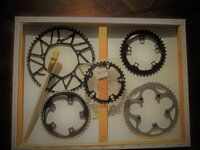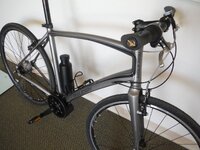scrambler
Well-Known Member
- Region
- USA
- City
- Bay Area, CA
Small precisionA pro rider puts out 80 Nm and that is about the most a drivetrain can take, so how much to dislodge your elbow if he twisted it using his legs?
A 76 kg rider (169Lb) standing on one pedal with a 160mm crank applies 750N on that pedal, creating a torque of 120Nm (750 x 0.16)
And that is just putting all its weight on, if he actually pushes back like someone jumping off the ground, he can probably apply more force on that crank.
The big difference is he can only do that for a fraction of a second...
So 80Nm may be a good number for sustained
Last edited:

